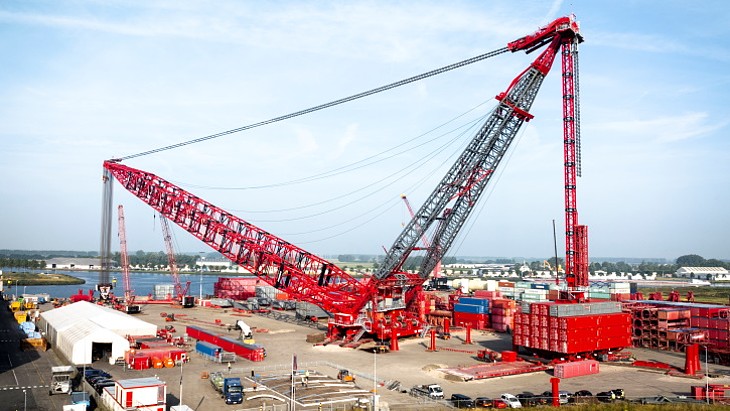
The company says the new crane "re-defines the scale of human construction, allowing large energy and infrastructure projects to build from bigger pieces, in parallel - reaching first power sooner, and more cost-effectively."
In addition to applications in offshore wind projects and in the oil and gas sector, Mammoet also envisages its use in nuclear new-build projects.
"As more new-build nuclear plants are greenlit, the SK6000 helps the sector to benefit from similar tried-and-tested construction methodologies - helping projects to reach completion sooner and deliver low carbon energy to communities," it said.
Nuclear power reactors, large and small, are increasingly being designed for modular construction, involving the off-site fabrication of large-scale complex systems, which are then transported to site for final installation and assembly. Such techniques can significantly reduce construction risk and help deliver new power plants to schedule and cost.
The SK6000 has a maximum capacity of 6000 tonnes, and is capable of lifting components up to 3000 tonnes to a height of 220 metres. The crane design uses containerisation techniques for ease of deployment, and can be transported using shipping containers to any location worldwide.
It also offers full electric power capability from battery or supply from the grid, allowing customers to reduce the carbon impact of projects significantly.
"This crane is truly a world record feat of engineering, with a production schedule to match," said Gavin Kerr, Director Global Services at Mammoet. "Hundreds of colleagues have been directly involved with its development across the business. There are very few companies on Earth - if any - that could have brought this crane into reality, and we are immensely proud to be able to do so."
The SK6000 is currently undergoing testing at Mammoet's Westdorpe facility in the Netherlands, ready for deployment to its first project later in the year.